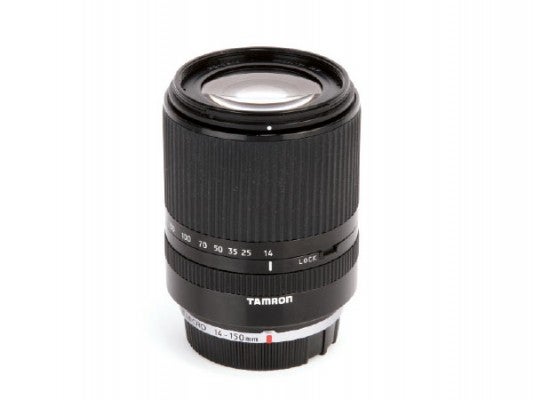Andy Westlake tests the only third-party zoom for Micro Four Thirds cameras
Tamron 14-150mm f/3.5-5.8 Di III Review
Sigma and Zeiss have each made a handful of primes, and Tamron just a single zoom – the 14-150mm f/3.5-5.8 Di III – which is the lens on test here. With a 28-300mm equivalent zoom range, it’s capable of covering a huge range of subjects.
In fact, this lens could lay claim to being one of the most overlooked offerings on the market. This is partly down to Tamron’s decision not to include built-in image stabilisation, which immediately limits its usefulness for owners of most Panasonic cameras (Lumix DMC-GX7 and DMC-GX8 users excepted). Long-range superzooms such as this also tend to have a reputation with photographers for mediocre image quality, as the price you pay for their undoubted versatility. The other problem is that both Olympus and Panasonic offer similar alternatives – the M.Zuiko Digital ED 14-150mm f/3.5-5.6 II and the Lumix G Vario 14-140mm f/3.5-5.6 OIS – which include weatherproofing and optical stabilisation respectively. So why even consider the Tamron?
The answer is, of course, price: selling at around £280, it’s significantly cheaper than the other two options. So for Micro Four Thirds users who want a flexible all-in-one travel lens and expect to use it in benign conditions, on paper it offers the best value. But does its relatively low cost mean it’s an inferior option? Let’s take a look.

14mm

150mm – The Tamron’s wide-ranging zoom makes it an ideal travel lens
Tamron 14-150mm f/3.5-5.8 Di III Review – Features
Comprising 17 elements in 13 groups and including one low-dispersion glass element, two anomalous dispersion glass elements, two glass-moulded aspherical elements and one hybrid aspherical element, the 14-150mm has the most complex optical design among Micro Four Thirds superzoom lenses. In principle, this should help reduce the optical aberrations to which lenses with such an ambitious zoom range tend to be prone.
Despite all this glass, the 14-150mm is surprisingly compact, with a barrel diameter of 63.5mm and a length of 80.4mm from the mount to the front of the non-rotating 52mm filter thread. In context, it’s smaller than Olympus’s budget M.Zuiko Digital 40-150mm f/4-5.6 telezoom and barely larger than 18-55mm kit zooms for APS-C DSLRs. At 285g it’s not especially heavy, either.
I’m pleased to say the lens is supplied with a bayonet-fitting petal-type plastic lens hood. Even better, it reverses neatly when not in use, fitting closely around the barrel. Packing up small is a real asset for this kind of travel lens.





